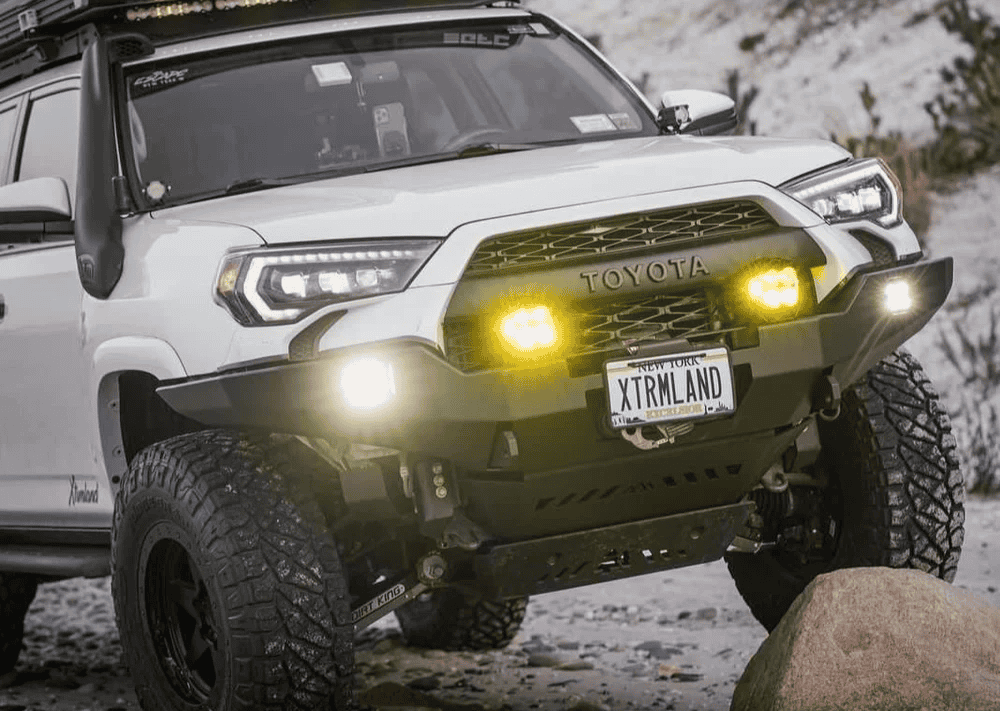Overland Vehicles

A coilover conversion replaces separate springs and shocks with a compact assembly that allows precise control over ride height and damping. The goal is consistent wheel control across real roads, not just smooth test tracks. Done correctly, coilovers sharpen steering response, stabilize body motion, and open up adjustability for changing loads. The key is to choose components sized for vehicle mass and intended use, then align setup choices with geometry and tire grip.
Spring rate supports the vehicle at the desired static height and sets the first line of roll and pitch resistance. Street biased setups often run moderate rates for compliance, while heavy duty and off road builds may require higher rates to manage cargo and accessories. Preload should be used to remove slack and set initial height without over compressing the spring. Excess preload can cause harshness at small bumps and reduce available travel.
Damping turns spring movement into controlled motion. Rebound manages how fast the suspension returns after compression, while compression resists the initial movement. Too much rebound can cause a choppy ride and pack down over rough surfaces. Too much compression produces impact harshness. Seek a balance where the tire stays connected, body motions settle in one or two cycles, and steering tracks without darting.
Top mounts, spacers, and hardware must match the chassis pick up points and support the intended loads. Rubber isolated mounts reduce noise and vibration, while spherical bearings transmit more feel and precision. Use corrosion resistant hardware with proper torque and thread engagement. Verify that the spring clears tires, sway bars, and brake lines through full steering and suspension travel.
Ride height is more than a stance decision. It shifts the roll center, alters camber gain, and changes half shaft and steering angles. A small height change can transform the way the platform behaves in quick transitions and under braking. After setting height, confirm alignment so the tire contact patch works at its best.
Set front and rear heights to achieve the intended rake and center of gravity. Heavier vehicles benefit from a small forward rake to keep braking stable. Corner balance is the process of equalizing diagonal weights with adjustable perches so the car turns consistently left and right. Even a simple two scale check can reveal a large imbalance that makes the vehicle feel nervous.
Camber sets the tire angle relative to the road. Modest negative camber helps grip in corners while preserving even wear on the street. Caster improves straight line stability and steering feel by increasing self centering. Toe has an outsized effect on response and stability. A small amount of front toe in and near neutral rear toe works well for daily use, but always confirm with real tire temperatures and wear.
Bump stops are part of the spring system. Hitting them too early can cause sudden understeer or a harsh jolt. Aim for usable compression travel before the stop engages softly, then enough rebound travel to keep tires planted over crests. For loaded vehicles, consider secondary rate solutions like helper springs to maintain travel and height under cargo.
Start with a clean baseline and build changes one at a time. Record settings, measure outcomes, and trust what tires and timing data tell you rather than assumptions. Street and trail environments reward balance over extremes.
Use a loop that includes broken pavement, smooth sections, and a steady highway segment. Look for quick steering without nervousness, stable mid corner behavior, and settled responses over successive bumps. Adjust rebound in small increments to reduce float or choppiness, and adjust compression to soften sharp impacts or add support under load. Recheck ride height after the first few drives as springs bed in.
Coilovers live close to the elements. Rinse off road grit, clean threads, and apply anti seize to locking rings. Inspect for leaks, torn boots, and loose mounts at each service interval. Re verify torque after seasonal temperature swings or long trips. Small maintenance keeps settings consistent over the long term.
If your project involves added mass from armor, racks, and expedition gear, the setup conversation extends beyond a simple adjustment. It touches chassis reinforcement, bump stop tuning, and alignment for real payloads. This is where a professional build process shines. Explore how purpose built systems come together on our Overland rigs page at Overland rigs. For tailored suspension planning within a complete vehicle program, see Custom upfits and learn more about our approach at Why choose OZK.
You bring the driving style and the places you love. We bring design, fabrication, and test driven suspension tuning that aligns your coilover conversion with real world demands. Share your goals and cargo profile, and we will deliver a ride that tracks straight, absorbs the ugly stuff, and stays composed with a full load.
Ready to feel the difference of a dialed coilover setup installed and tuned by professionals who build adventure vehicles every day? Tell us how you drive, what you carry, and where you roam, and we will design, install, and validate a complete solution that rides right from day one.
ADDRESS:
6159 E Huntsville Rd, Fayetteville, AR 72701
PHONE:
(479) 326-9200
EMAIL:
info@ozkvans.com